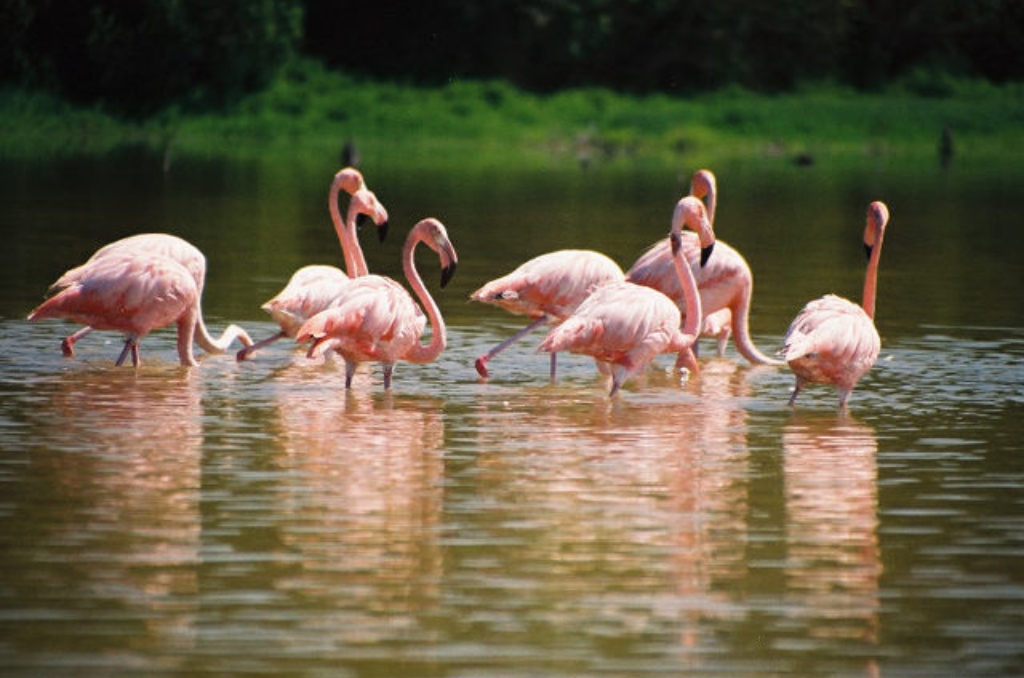Flamingos at Mud Lake, Everglades National Park, NPSPhoto, taken by R.Illiescu. Flickr/Everglades National Park
You may or may not have known that there are actual forests in Florida. The Florida National Forests offer something for everyone. Whether it’s hiking trails or camping to just simply wanting to walk around in nature, you may want to visit and experience all the forest land that Florida has to offer. We highly recommend you visit Apalachicola, Osceola and Ocala Forests if you ever find yourself near one of these places.
These federal lands span almost 1.2 million acres throughout the state with a $22.5 million dollar annual budget and fewer than 200 employees statewide. Of that 1.2 million acres, approximately 500,000 are wetlands and more than 85,000 acres are designated federal wilderness areas with no roads and no access permitted except on foot.
Read on to find out more about why visiting these wetlands are a must if you are a hiking enthusiast.
Apalachicola National Forest
Apalachicola is one of three national forests in Florida. It is one of the last remaining large areas of swamps, savannahs and pine forests. The rivers of Apalachicola provide freshwater flow to coastal bays or estuaries known for shellfish or other commercial seafood. The waterways of Apalachicola offer entertainment in the form of boating and fishing along the Ochlockonee and Apalachicola Rivers.
Also located at Apalachicola Forest is Fort Gadsden Historic Site (also known as Prospect Bluff Historic Sites since 2016) and Leon Sinks Geological Area. The site of Prospect Bluff contains the ruins of two forts: the earlier Negro Fort and Fort Gadsden. The Negro Fort was built in 1814 by the British. Fort Gadsden was later built in 1818 inside the former walls of Negro Fort.
We encourage exploring the many trails and roads inside the forest, ideal for hiking, mountain-bike riding, horseback riding, off-roading, and even motorcycle riding.
Osceola National Forest
The Osceola National Forest is located between Lake City and Jacksonville. It is the Northernmost forest and smallest national forest.
Big Gum Swamp, a wilderness area with more than 13,000 acres of cypress-sweetgum swamp, can be found near the center of the forest. It is a popular destination for visiting hiking enthusiasts. Another place to visit while there is Ocean Pond, a large, shallow lake. Ocean Pond is popular for recreation. The site is also important to Florida’s Civil War history.
Visitors to Osceola National may enjoy unpaved forest roads (except where boundary markers indicate otherwise). There is one designated trail for backpackers, a 20-mile segment of the Florida Trail stretching from Deep Creek to Olustee Battlefield, as well as several nature trails for all ages.
Ocala National Forest
Last but certainly not least is Ocala National Forest. Located in Ocala, Florida, this The Forest has huge springs, twisting streams and lakes for fishing, boating, and water skiing. The main attractions here are Juniper Springs, Alexander Springs, Salt Springs and Silver Glen Springs.. Snorkelers are tempted to take a dip in its crystal-clear waters, getting a fantastic view of fish, swaying vegetation and cavernous springs when they do.
The Ocala portion of the Florida National Scenic Trail traverses the Forest north to south, winding through multiple ecosystems. If you travel further you will find open longleaf pine forest, vast prairies, wooden boardwalks through swamps, thick scrub oak (sand pine) and oak hammocks. The Trail goes on for approximately 67 miles for those of you interested in backpacking.
Take a little trip and let your mind and soul feel at peace while in nature surrounded by Florida’s natural beauty. Pretty beaches and summer weather is not all that the Sunshine State has to offer.
Melissa’s career in writing started more than 20 years ago. Today, she lives in South Florida with her husband and two boys.

